Best Studio Monitors at Every Price
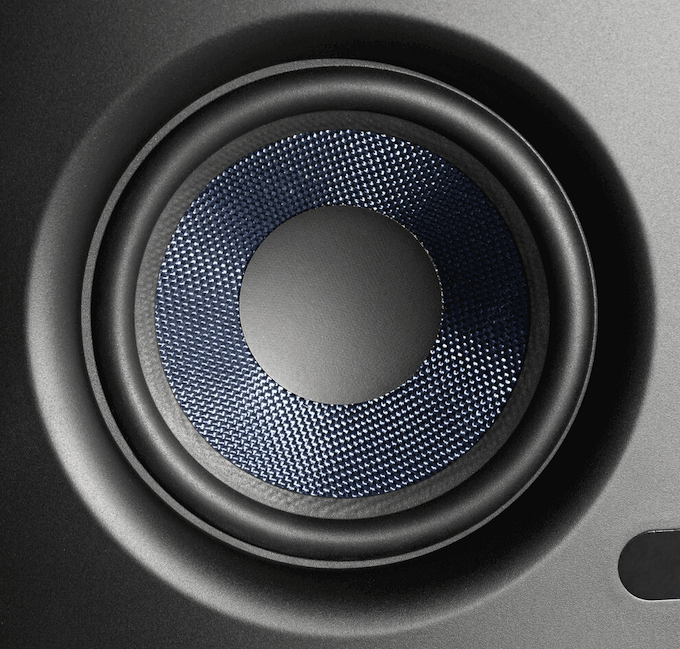
Best Studio Monitors at Every Price
There are many articles across the web ranking top studio monitors. However, most of them mention only one specific price range. Or, they recommend too many studio monitors at random prices. This can cause confusion when trying to decide which monitors you should buy. We’ve gone ahead and simplified things for you. Below, we’ve listed the best studio monitors at every price range as of 2019.
We carefully researched dozens of active studio monitors at every price range and weighed all the pros and cons. Now, the verdict is out. We’ve worked our way up starting at the best studio monitor under $100, all the way up to the best studio monitor under $1,000. With the exception of our first recommendation, the below monitors are priced per each monitor, not per pair. Let’s get this started.
Jump to..
Best Studio Monitor Under $100 / Best Studio Monitor Under $150 / Best Studio Monitor Under $200 / Best Studio Monitor Under $300 / Best Studio Monitor Under $400 / Best Studio Monitor Under $500 / Best Studio Monitor Under $600 / Best Studio Monitor Under $700 / Best Studio Monitor Under $800 / Best Studio Monitor Under $900 / Best Studio Monitor Under $1000
Best Studio Monitor Under $100
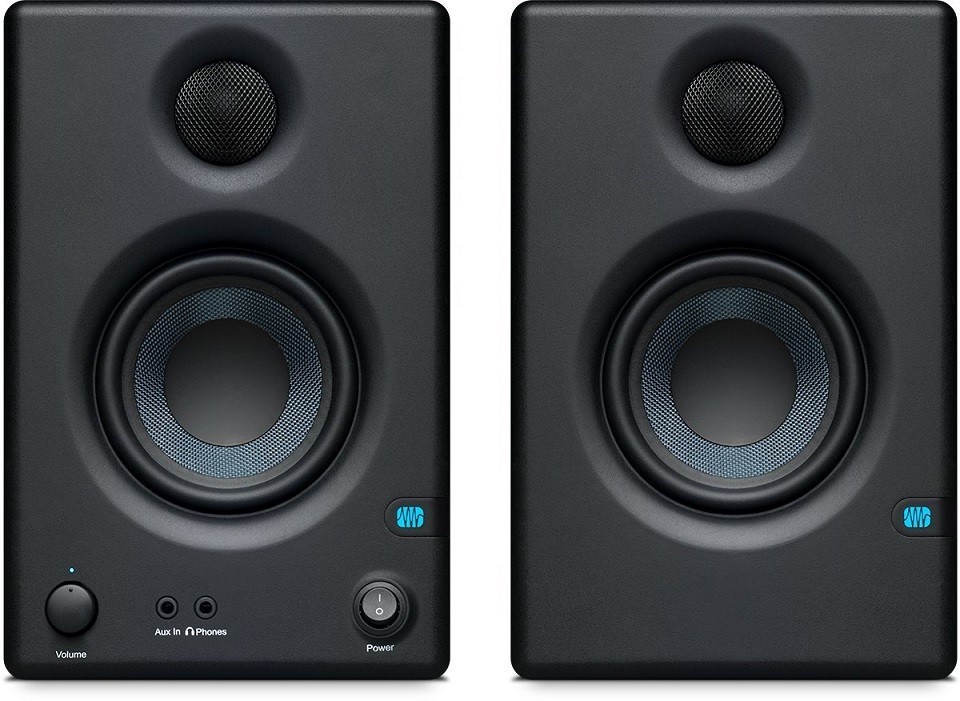
PreSonus Eris E3.5
Our first and cheapest pick begins at the under $100 price range. We’ve chosen the PreSonus Eris E3.5. This is our only pick that will be listed by price per pair. One of the biggest advantages with the design of the Eris 3.5 is that it comes from the highly reputable and experienced company, PreSonus. PreSonus has some of the best studio monitors in the game, from the more expensive Eris E8 through the E5, E4.5, and all the way down to the E3.5.
The PreSonus Touch
The E3.5 is engineered with much of the same technology as PreSonus’s more expensive studio monitors. Their woofers are made from woven Kevlar which improve the dispersion of sound. And, they even use the same silk dome tweeters as the larger Eris E5. These tweeters are larger than most you’ll see on monitors of these size. They provide a detailed and accurate high-end. These monitors may be small (with only 3.5 inch drivers), but they pack a lot of power for their size.
The Eris E3.5 have a pretty impressive bass response for being so compact. Furthermore, they do not have any significant boosts across their frequency spectrum and remain highly accurate. The Eris E3.5 also has great stereo imaging with a wide listening area (sweet spot). But, one of its greatest weapons, is its acoustic tuning controls. By using the onboard acoustic tuning controls, you are able to adjust the balance of sound to fit your specific room. Because of this, we believe the PreSonus Eris 3.5 is the best studio monitor under $100.
Pros:
- Detailed sound
- Accurate bass, not boosted
- Impressive stereo imaging
- High-quality Kevlar woofers
- Acoustic tuning controls for room adjustment
Cons:
- Very light, feels fragile
- High-end can sound harsh at times
- No XLR inputs
Best Studio Monitor Under $150
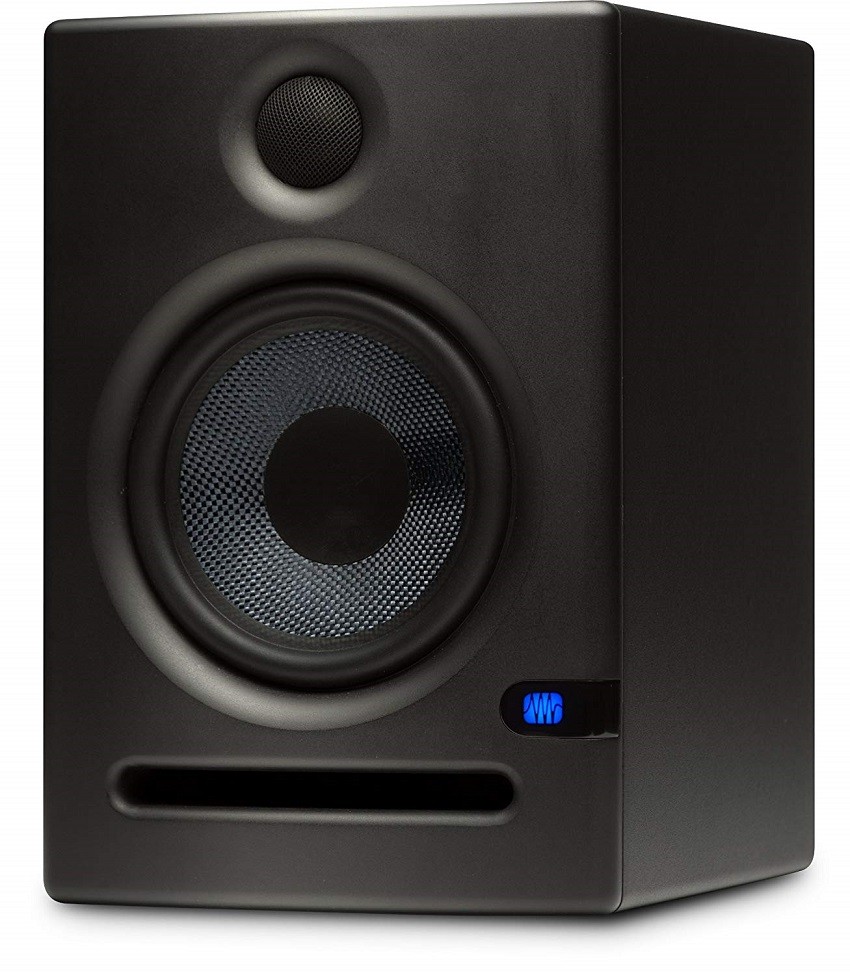
PreSonus Eris E5
Déjà vu? Nope, we tried hard to find a better monitor at the under $150 price range. We could not. The options available at this price range are indeed vast. Still, the PreSonus Eris E5 is the clear winner. In fact, the Eris E5 might be the best value on this whole list. What it brings to the table at its low price is pretty incredible. It clearly outshines more expensive monitors like the Yamaha HS5 and JBL 305P MKII.
It’s remarkable what you can do with a very small increase in price. While, the Eris E3.5 is a great pair of cheap monitors, the Eris E5 takes it to the next level. It’s still got the same Kevlar woven driver and 1-inch silk dome tweeter that we love. But, its acoustic tuning controls have been substantially improved. There are now mid-range, high-end, low-cutoff and acoustic space controls. The three-position acoustic space adjustment is a great addition, which allows you to compensate for bass boosts when the monitors are placed near a corner or wall. This gives the E5 a degree of flexibility that other monitors at this price range lack.
Although the Eris E5 has additional features that the E3.5 lacked, that’s not exactly what makes the E5 so special. They’re great features, but what really makes the E5 stand out is its highly accurate sound. If you’re looking for better bass, you may be better off buying the similarly priced KRK Rokit 5 G3, but if you’re looking for balance, detail, and accuracy, the PreSonus Eris E5 is certainly the best studio monitor under $150.
Pros:
- Detailed, balanced sound
- Accurate bass, not hyped
- Great stereo imaging
- High-quality Kevlar woofers
- Acoustic tuning controls to suit your environment
Cons:
- Lacks deep bass
Best Studio Monitor under $200
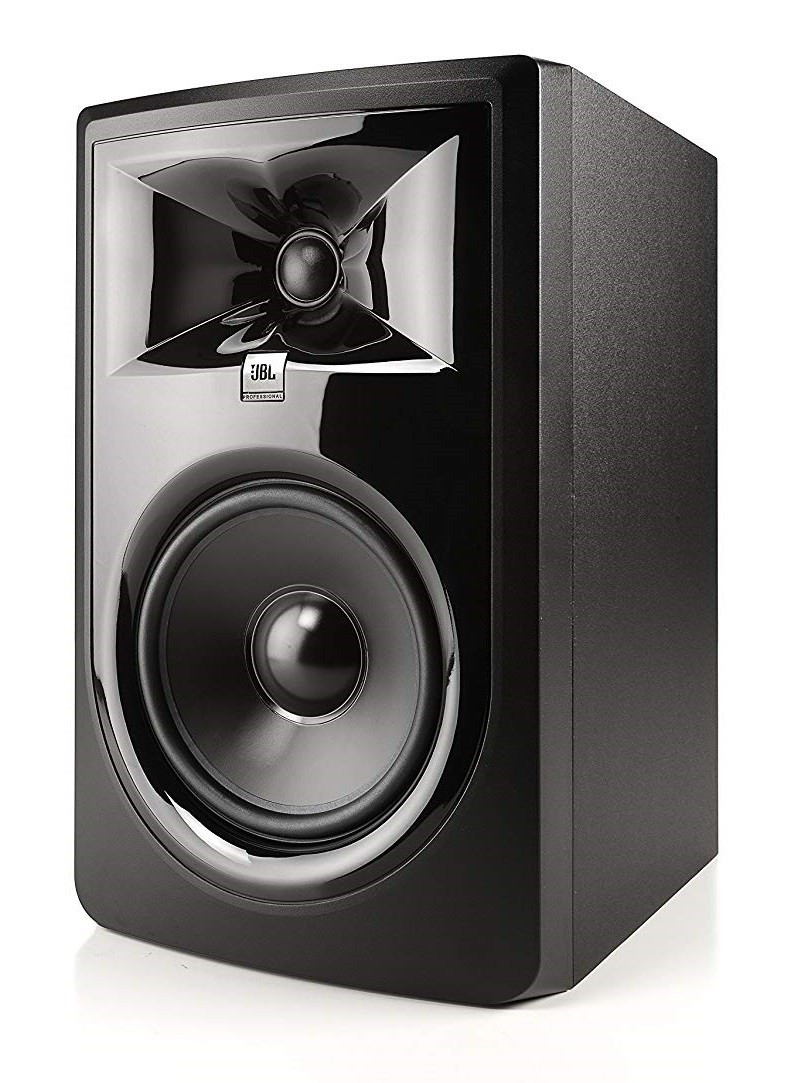
JBL 306P MKII
As we move up covering the best studio monitors at every price range, the size and quality of drivers also increase. At the under $200 price range we’ve chosen the JBL 306P MKII. With larger cabinets and drivers, comes the ability for monitors to produce better bass. The powerful and accurate bass is the first highlight of these monitors. Indeed, the 306P has a much cleaner and deeper bass response than most studio monitors at its price range. The 306P uses its patented Slip Stream technology with its bass port to ensure consistent bass performance at all playback levels.
Quality Sound
If you’re producing and mixing high bass genres like Hip-hop or EDM, the 306P makes up for what the Eris E5 lacked. Like the E5, the 306P has rear EQ controls. Using its high-frequency trim and bass-shelf controls you can adjust this monitor to better fit your listening environment. This makes the 306P highly versatile in any environment. There is little need to adjust your mids, though. The 306P has an impressively flat frequency response, allowing you the ability to produce great-sounding balanced mixes.
The final highlight of these monitors is their incredible stereo imaging. JBL uses its patented Image Control Waveguide to produce a wide sweet spot with highly detailed imaging. This allows for great accuracy in a variety of working spaces. Once you combine this with the rear EQ controls and flat sound, you have a real winner. The only drawbacks we could identify is the shiny plastic finish on the front of these monitors which is prone to collecting fingerprints and dust. And second, there seems to be some low-level amp hiss. Although it will not interfere with your listening experience, it is clearly an imperfection. Nonetheless, the strengths of this monitor are very clear, and we believe the JBL 306P MKII to be the best studio monitor under $200.
Pros:
- Powerful bass with high-quality bass port
- Solid stereo imaging, wide soundstage
- Flat response, consistent sound
- Rear EQ controls to suit listening environment
Cons:
- Some low-level amp noise
- Plastic finish is prone to fingerprints and dust
Best Studio Monitor Under $300
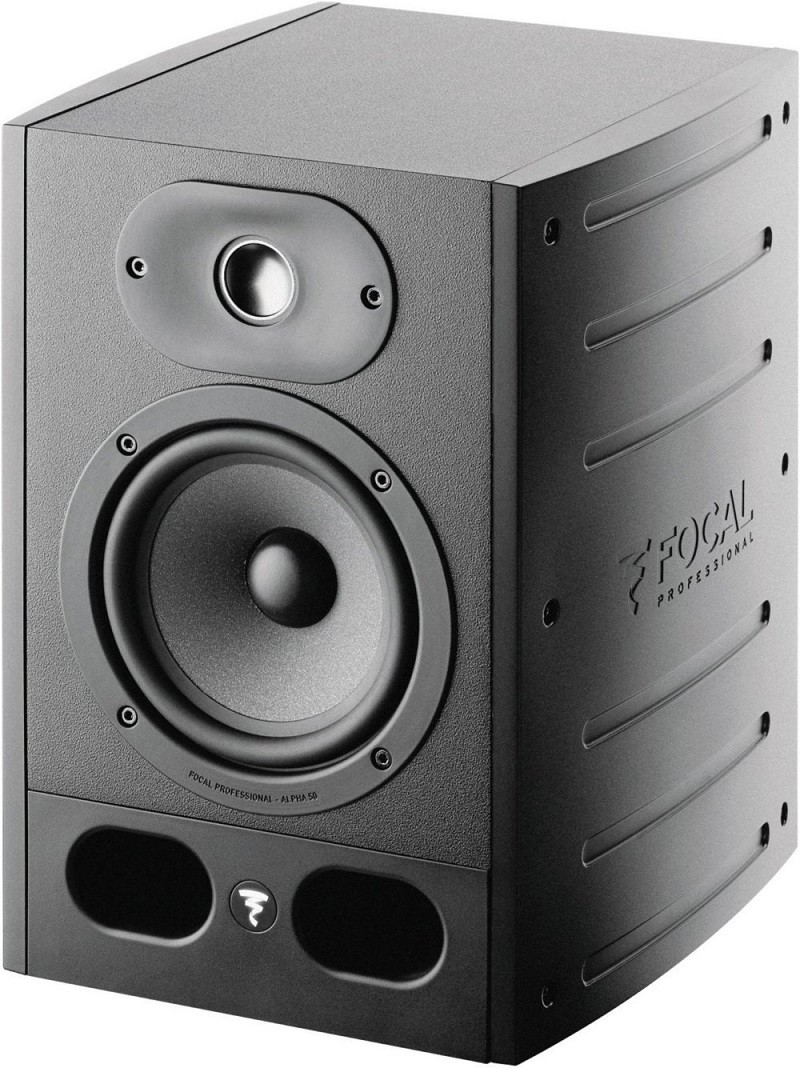
Focal Alpha 50
Focal is one of the most respected brands in audio. This French company produces some of the most high-fidelity studio monitors in the game. Although we are moving up in price range, the Focal Alpha 50 is the cheapest studio monitor currently offered by Focal. At this price range we’re dealing with the likes of the Yamaha HS7, KRK ROKIT 7 G4, JBL 308P MKII, and PreSonus Eris E8 XT. What do they all have in common? With 7 and 8-inch drivers, they’re much larger than the Alpha 50. Nonetheless, the Focal Alpha 50 is a 5-inch monitor that we still stand behind as the best studio monitor under $300. How could this be?
Like a Grenade
The Focal Alpha 50 is like a powerful grenade. Smaller and more compact than most monitors in its price range, the Alpha 50 is packed with power and precision. If there is one word to describe these monitors, it’s got to be – clarity. These monitors seem to have a highly-detailed sound at just about every frequency range. For their size, they also pack a considerable amount of bass. They lack the boom and flash of other monitors and its price range. But, they offer a level of clarity that is one step above the others. They are very revealing and responsive with impressive imaging, tremendous for mixing and mastering.
The Alpha 50 also has high-frequency and low-frequency shelving controls to adjust for your room. In addition, it features an energy-saving standby mode which cuts power off after 30 minutes of inactivity. Although they’re somewhat unattractive, they are very solid and well designed. It’s the sound that really matters and separates the Alpha 50 from the rest. That is why our clear pick is the Focal Alpha 50 as the best studio monitor under $300.
Pros:
- Highly transparent, revealing sound
- Incredible clarity across spectrum
- Excellent stereo imaging
- Tight, accurate low-end
- Energy-saving standby mode
Cons:
- They’re a little ugly.
Best Studio Monitor Under $400
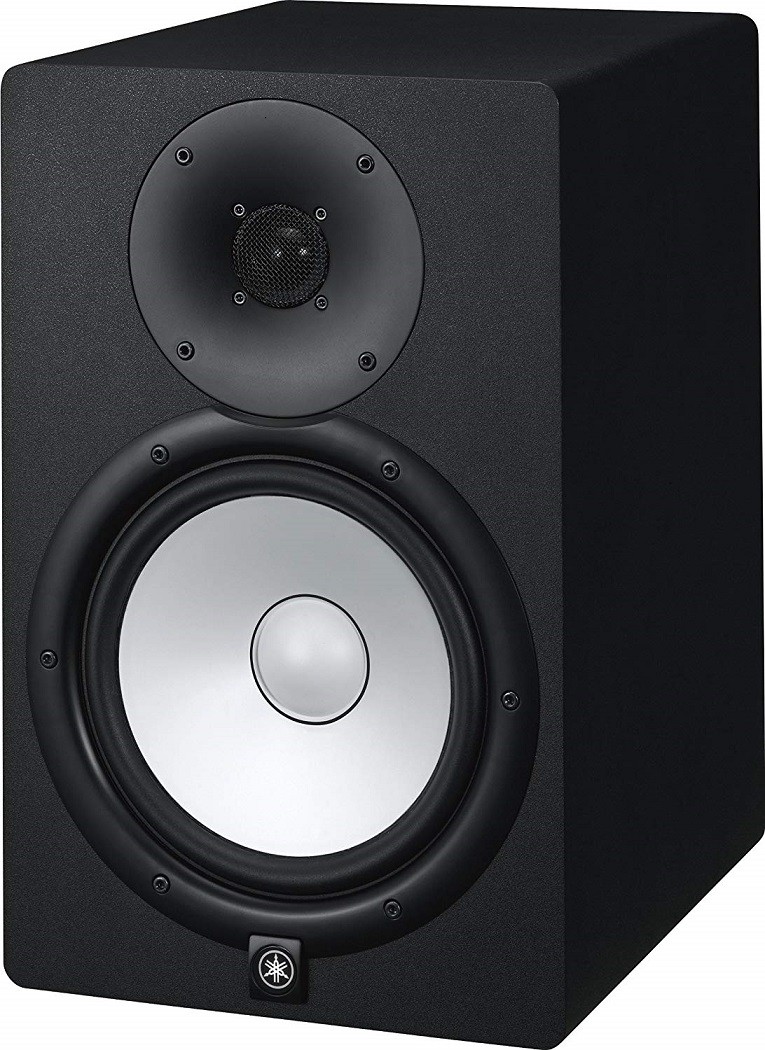
Yamaha HS8
If this was a popularity contest, Yamaha monitors would be all over this article. Indeed, Yamaha does produce some great monitors. But, the strength of their brand often overshadows the great sound of other comparable brands. Still, at the under $400 price range, we think the masses are right to prefer Yamaha’s HS8. Let’s dive into why we think the Yamaha HS8 is the best studio monitor at under $400.
From NS10 to HS8
The Yamaha HS8 is considered the number one modern alternative to the legendary Yamaha NS10 – the studio monitor found in just about every pro studio for decades. Yes, they may look alike, but they couldn’t be more different when it comes to sound and design. The NS10 is an unported (sealed cabinet) passive studio monitor. It has a 7-inch driver, lacks bass, and is far from flat. The HS8 is a ported active studio monitor. It has an 8-inch driver, produces solid bass, and has a considerably flat response. Still, the HS8 remains intertwined with the NS10 and a modern day studio staple.
The key to the HS8’s greatness is that it’s an all-around great studio monitor. While some studio monitors at this price range may have one or two superior qualities over the HS8, they tend to lack just as much.The Yamaha HS8 fills all the checkboxes and has no significant drawbacks. The only negative we could find is that the HS8 seems to require more cautious placement than other monitors at its price. This may be due to its large shape and size and that it has a rear port design. There are some room controls to help adjust your monitors for your room, but they’re somewhat lacking compared to other similarly priced monitors.
Nonetheless, because it has a full and flat-response across the board, it is a great tool for mixing. Although Yamaha offers a subwoofer to pair up with the HS8, its bass response all the way down to 38hz requires little need for supplementary bass monitoring. Topped off with an attractive and high-quality design, we consider the Yamaha HS8 to be the best studio monitor under $400.
Pros:
- Solid bass response
- Detailed high-end
- Flat sound across frequency spectrum
- Powerful output, lots of headroom
- Attractive design with iconic Yamaha style
Cons:
- Requires careful placement having rear bass ports
Best Studio Monitor Under $500
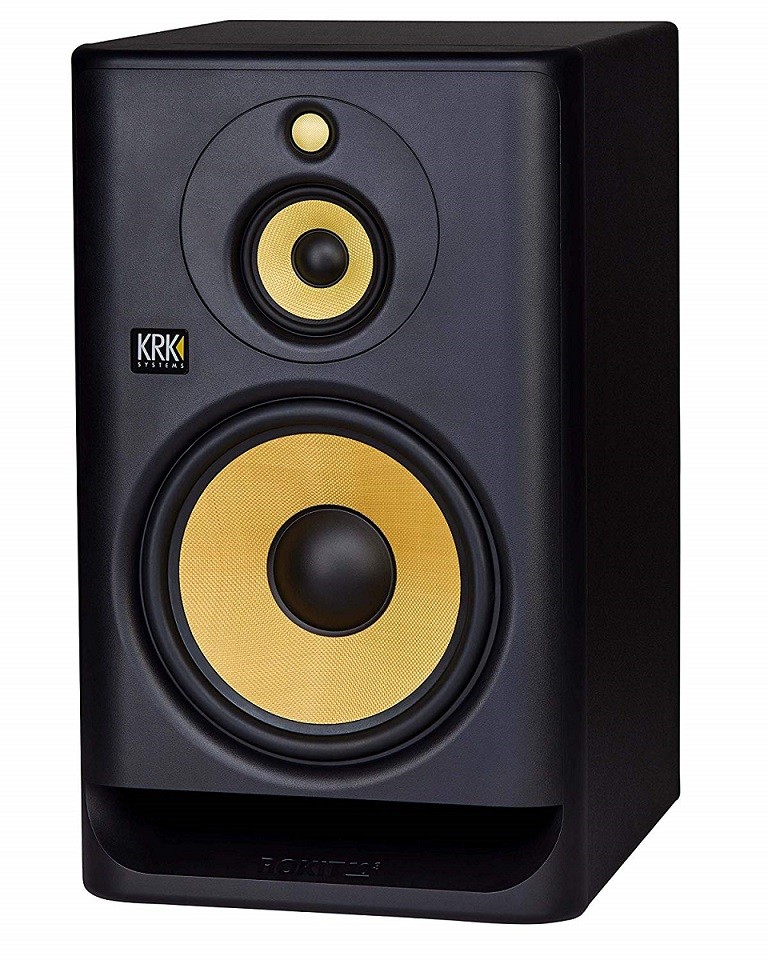
KRK Rokit 10-3 G4
KRK makes some great studio monitors at every price range. Like Yamaha, they’re one of the most popular brands. This is especially true on the entry-level. However, in our opinion the popular entry-level KRK Rokits tend to be more hyped up and lack the flat response and level of detail that other similarly priced monitors have. Still, what we find with the KRK Rokit 10-3 G4 is a monitor that is uniquely different than other monitors at this price range. Let’s start with its size.
Mass and Power
There’s no way around it, the Rokit 10 is massive. That is to say, it’s nearly two feet tall and over a foot wide. It even weighs over 35lbs. As you know, with size comes extended frequency range and great power. And, with great power comes great responsibility. The Rokit 10 has an output of 300 watts and a bass response all the way down to 26hz. That’s enough to get the house shaking. Most studio monitors tend to lack in bass and require supplementary bass monitoring, not the Rokit 10. Still, we would not have chosen this monitor if those were its only strengths.
The Rokit 10 is also meticulously designed. It’s Kevlar woofer and tweeter helps add punch, depth, range and width to its sound. It’s one of the few available 3-way studio monitors at its price range. The matching Kevlar drivers also help with its crossover point ensuring consistent sound across the spectrum. Overall, the frequency response is pretty flat. Furthermore, the Rokit 10 has a surprisingly versatile onboard graphic EQ on its rear. The DSP-driven EQ has 25 settings including various presets to suit the Rokit 10 to your specific room.
Because of the versatility, power and impressive frequency range of the KRK Rokit 10, it’s our clear winner for the best studio monitor under $500. Let’s just hope you can fit it in your studio.
Pros:
- Kevlar tweeter and woofer
- Quality 3-way design
- Exceptional bass response
- Powerful 300 watt output
Cons:
- Similarly priced monitors challenge the Rokit 10’s accuracy of sound
- Large size requires careful placement and positioning
Best Studio Monitor Under $600
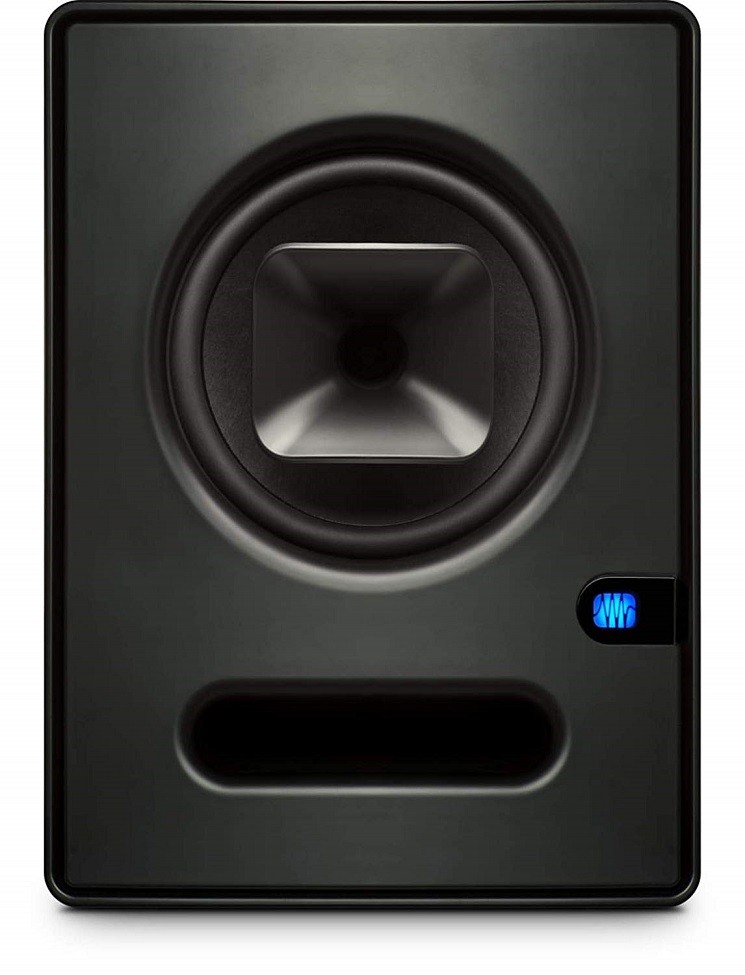
PreSonus Sceptre S8
This is our third PreSonus monitor on this list of best studio monitors at every price. Yes, PreSonus simply knows how to do it right. As we move towards the under $600 price point, the capabilities of design and engineering continue to expand. With its unique design, we’ve chosen the Eris Sceptre S8 as the best studio monitor under $600. It is the most expensive studio monitor offered by PreSonus, and for good reason.
Coaxial Design
Its uniqueness starts with its coaxial design. In a coaxial design, you have the tweeter sitting in the center of the woofer. With this single point listening source, you get some amazing results. The stereo imaging from a coaxial monitor is far superior compared to conventional 2-way monitors. However, there are some drawbacks to this design as well. Coaxial designs are prone to unwanted frequencies and problematic resonances. However, PreSonus’s patented “CoActual” design overcomes these issues using a unique design shape and a specialized onboard DSP. That is to say, the Sceptre S8 uses time correcting DSP to create incredible 3D-like stereo imaging. Time accurate and phase accurate, the Sceptre S8 offers the best stereo imaging of any monitor at the under $600 price range.
What we find with PreSonus is that they never hype the sound of their monitors up. Their main priority is accuracy. Monitors like KRK’s Rokits may be far more popular, but often they have hyped up bass. Rokits tend to be focused more on flash than the total purity of sound. In comparison, the Sceptre S8 is impressively accurate and detailed. The stereo imaging really does feel like it’s in 3D. In conclusion, it is likely to yield much better results during mixing and mastering than other similarly priced monitors. Because of this, we believe the PreSonus Sceptre S8 to be the best studio monitor under $600, by far.
Pros:
- Specialized coaxial design
- Incredible stereo imaging
- Precise, detailed sound
- Tight, accurate bass
- Acoustic tuning controls to suit room
Cons:
- Lacks the powerful bass of similarly priced monitors
- Not the best looking
Best Studio Monitor Under $700
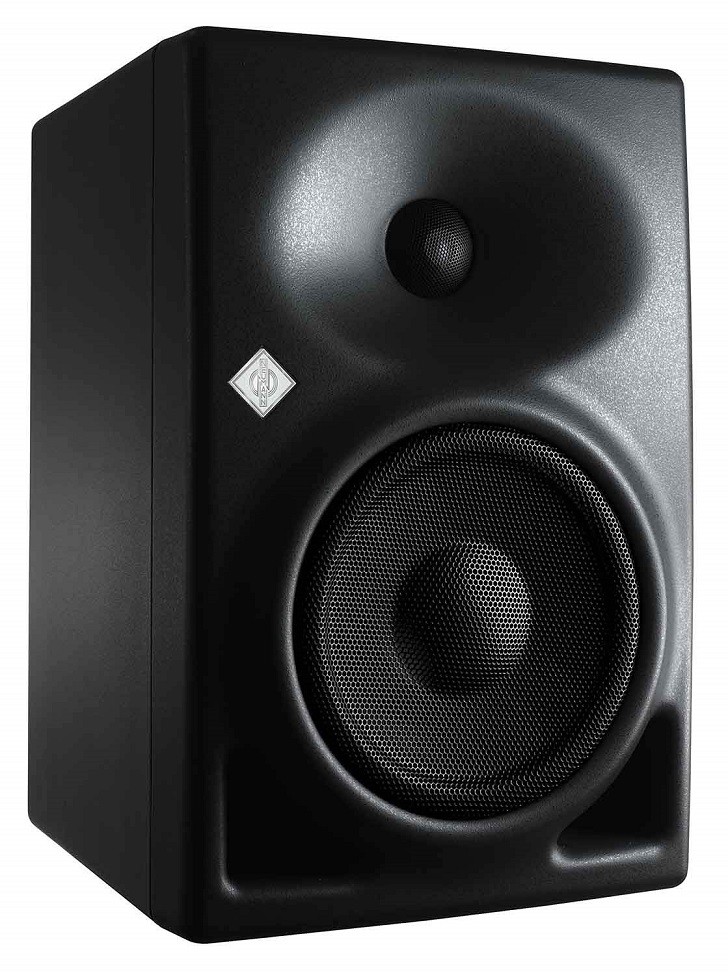
Neumann KH 120
When you see the Neumann name, you know you’re getting a quality product. There is something about German design that seems to always produce an immaculate result. Like PreSonus, Neumann has no time for gimmicks or hype. Perhaps, the main difference between Neumann and Presonus, is that Neumann tends to be a bit more minimalist. They take a seemingly simple design and concentrate on the finest details. Still, you can expect to get the most out of the simple with Neumann. That may be why this small, 5.25-inch studio monitor still outshines its flashier competitors. What could it be about the minimalist Neumann KH 120 that makes it the best studio monitor under $700?
Neumann Design
It begins with its robust aluminum cabinet. Around its titanium tweeter, Neumann integrates its “Mathematically Modelled Dispersion (MMD)” waveguide onto its cabinet. The physical properties of the MMD results in a broader sweet spot with smooth off-axis response. As a result, you get tightly controlled high frequencies and quality sound at a variety of listening angles. Although it’s woofer is only 5.25 inches, it produces powerful sound with an impressively wide bandwidth. The design of its dual bass ports are also quite impressive. It produces an accurate bass sound with very little resonance and smearing of sound as often expected with ported monitors.
The imaging and accuracy of sound is simply top tier. The KH 120 is highly revealing and transparent. After using these monitors, mixes seem to translate perfectly from source to source. Furthermore, the KH 120 also has rear acoustical controls to suit your listening environment. The only negative we could find is that you’re not going to get the deep bass sound that you would with a larger monitor at this price range. Nonetheless, this should be expected with a monitor of this size. Because of its superior sound across the spectrum, its high resolution and revealing, detailed sound, the Neumann KH 120 is our top studio monitor under $700.
Pros:
- Solid, robust design
- Highly revealing and detailed sound
- Very accurate, translatable mixing
- Wide soundstage, sweet spot
- Great stereo imaging
Cons:
- Lacks substantial bass
Best Studio Monitor Under $800
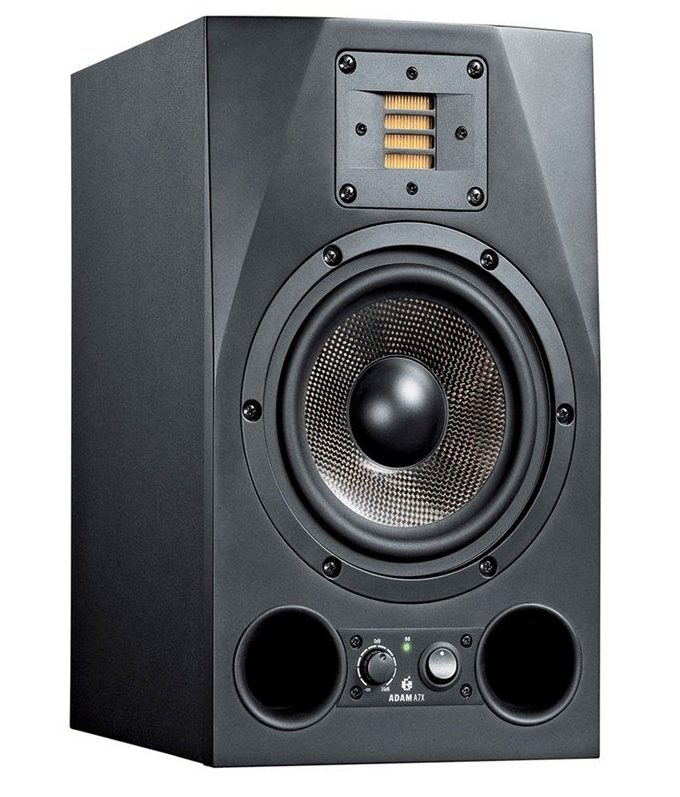
ADAM Audio A7X
Our list of the best studio monitors at every price would be incomplete without ADAM Audio making an appearance. Founded in 1999, ADAM Audio is a relatively young company compared to its rivals. Still, it has already soared to the top as one of the leading brands in studio monitoring. Like Neumann, German engineering is alive with ADAM Audio A7X. The A7X is their best-selling nearfield monitor. It has won numerous awards and proven itself through its quality and performance. Let’s cover why we’ve chosen the ADAM Audio A7X as the best studio monitor under $800.
The A7X has a 7-inch Kevlar-coated woofer with a honeycomb Nomex core. It sounds great and was meticulously designed to break up undesired resonances and produce a highly accurate and clean sound. However, the real highlight of the A7X is not its woofer. It’s its tweeter. The A7X has a unique handmade ribbon tweeter – their X-ART (eXtended Accelerated Ribbon Technology) tweeter.
Superior Tweeter
What is really special about this tweeter is the way it moves. Like an accordion, It is pleated and draws air in and out through its folds. When unfolded, it has around four times the surface area of a conventional 1-inch dome tweeter. Its design allows for increased dynamic output, wider dispersion of sound, and incredibly accurate high frequencies. Its frequency range even extends up to 50khz. Although this is well beyond what the human ear can hear, it is a testament to the superior design of ADAM Audio’s tweeter.
The A7X also has an impressively smooth crossover between the tweeter and woofer. This results in a consistent sound throughout its frequency spectrum. Under the woofer, between its front bass ports, is the A7X’s power switch. Unlike most studio monitors that put this switch on the rear, this is a nice touch from ADAM audio with easy access. On the rear, are high-shelf, low-shelf, and tweeter level tone controls. They are quite dynamic allowing you to adjust the high-shelf and low-shelf plus or minus 6dB. This allows you to not only adjust the A7X to suit your room, but to stretch out the sound of the A7X as you please.
Because of the clean and accurate sound that the A7X produces, it is perfect for mixing and mastering. Music sounds very detailed and precise, especially the high-end. The front ports do a great job providing solid, controlled bass. The only negative we could find is that there are some isolated reports of power problems with the A7X. Reported issues range from power cables fitting poorly to sudden outages. Nonetheless, these reports seem to be very isolated and should not scare you away from purchasing the A7X. This studio monitor is amazingly accurate and has our pick as the best studio monitor under $800.
Pros:
- Robust and attractive build
- Unique ribbon tweeter design
- Highly controlled and precise sound
- Excellent for mixing
Cons:
- Isolated reports of power issues
Best Studio Monitor Under $900
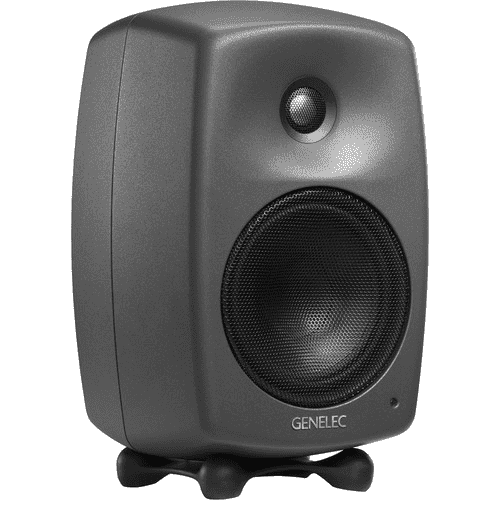
Genelec 8330A
Our next pick comes from Genelec. Genelec is a company out of Finland with over 40 years of experience in audio. They produce some of the finest studio monitors in the game. For this pick we scale back down in size, down to the 5-inch Genelec 8330A. This monitor is small and compact, but an invaluable tool in the studio. Let’s go over why the Genelec 8330A is our pick for the best studio monitor under $900.
Accuracy and Precision
The goal of the 8330A is clearly not size and power. It is clarity and precision. Out of the box, the 8330A produces highly detailed and quality sound. The shape and design of its Minimum Diffraction Enclosure and Directivity Control Waveguide around the tweeter ensures consistent off-axis response and a wide sweet spot. This means a flat and precise sound, perfect for mixing. However, there is one feature that makes the 8330A truly special, its Smart Active Monitoring (SAM) technology.
SAM technology makes it possible for the 8330A to calibrate itself for any room or listening environment. Through the use of Genelec’s GLM software and measurement microphone, you can quickly take measurements of your listening area. Using these measurements, the 8330As can automatically align their levels, frequency response, and timing for your environment. This results in a flat, accurate sound in any setting, making the 8330A an incredible mix tool. You will unfortunately have to purchase the GLM kit to use this feature. And although the 8330A is a great studio monitor without this technology, we still recommend taking advantage of it.
Because of this ability to calibrate your monitors for any listening environment, and its compact size, the 8330A is perfect for travel. However, we must say that this monitor isn’t particularly attractive (looks somewhat cheap in our opinion). Still, it is very well built. It’s enclosure is made from die cast aluminum, making the 8330A very sturdy and robust. After you consider all of its sonic transparency and versatility, it’s a clear winner. We believe the Genelec 8330A is the best studio monitor under $900.
Pros:
- Transparent, revealing sound
- SAM technology calibrates monitor for perfect room sound
- Solid and compact, great for travel
- Smooth off-axis response
- Wide, detailed soundstage
Cons:
- They have a cheap look for their price
- Needs additional subwoofer for deep bass
Best Studio Monitor Under $1000
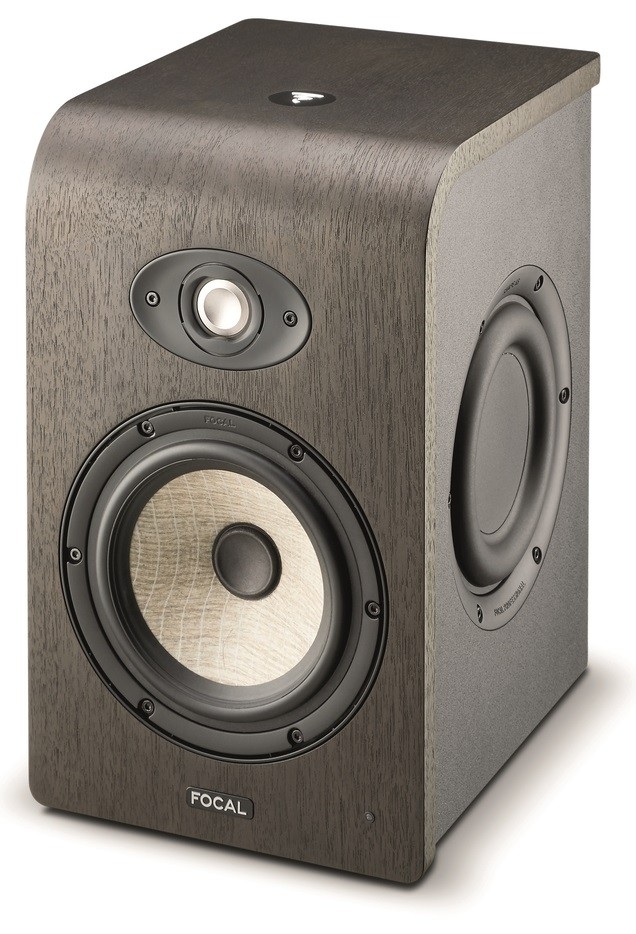
Focal Shape 65
Finally, we wrap up this article covering 2019’s best studio monitors at every price range with another monitor from one of the best audio companies out there. If this list continued onward we can guarantee there would be even more monitors from Focal. This French company produces outstanding monitors and the Focal Shape 65 is no exception. We’ve gone ahead and picked the Focal Shape 65 as the best studio monitor under $1000.
The appeal of Focal’s Shape 65 starts with its look and build. At first glance it’s clear that Focal has aimed for a more natural look with the Shape 65. The look is attractive and this monitor is sturdy and well-designed. It has a sealed cabinet with natural walnut veneer and a cone made from an interesting material, raw flax fibers. The woofer’s rigid flax fibers result in a very controlled sound that does a superb job at damping and eliminating resonances. Because it has a sealed cabinet, it does not have any bass ports. Instead, the Shape 65 uses 6.5” double passive radiators. And, this is what makes the Shape 65 stand out from the rest.
Passive Radiators for the Win
There is a passive radiator on each side of the Shape 65 and each is mounted in a double suspension system. At high volumes, this allows the radiators to remain very stable with minimal movement. This results in a tight bass sound that extends considerably low. Because it is portless, this also means you can place the Shape 65 rather close to walls with minimal adverse effects. In addition, there is a 3-band eq on the rear allowing you to further adjust the Alpha 65 to suit your room.
Another special feature of the Shape 65, is its tweeter design. Using an inverted dome tweeter, the Shape 65 achieves great off-axis response. It has a ridge around the dome which results in minimal distortion and improved sound dispersion. The Shape 65 also has a very neutral sound from high to low. Its transparency, detail, and flat sound makes it an amazing choice for mixing and mastering audio. We’ve covered the best studio monitors at every price range and don’t believe there is a better monitor to end our article with. We believe the Focal Alpha 65 is the best studio monitor under $1000.
Pros:
- Sealed cabinet with tight transient response
- Double passive radiator allowing placement near walls
- Broad sweet spot, accurate off-axis response
- Neutral sound with tight bass
- Detailed sound, great stereo imaging
Cons:
- Will need a subwoofer for deep bass
Conclusion: Best Studio Monitors at Every Price 2019
We hope this article has offered some help on purchasing your next pair of studio monitors. We decided to stop off at the under $1,000 price point. Beyond $1,000 per monitor, you begin to exceed the budgets of most home studio producers. We wanted to keep things as relevant as possible to most producers. Past $1,000, brands like PreSonus, Yamaha, Mackie, or KRK begin to disappear. You’re more likely to see high-end brands such as ADAM Audio, ATC, Focal, Neumann, and Genelec. You can generally expect great results from the high-end brands even with their lower-budget studio monitors. They have invaluable insight into the engineering and design of studio monitors. Their specialization and expertise in studio monitors is something that popular brands like Behringer, M-Audio and Alesis can sometimes lack, reflecting in their studio monitors.
Nonetheless, you’re in good shape with any of the above studio monitors as they line up with your budget. We’ve covered 2019’s best studio monitors at every price range and wish the best with your next studio purchase.
What are your thoughts? Do you disagree with our best studio monitors at every price picks? Feel free to let us know in a comment below or reach us on our Twitter or our Instagram.

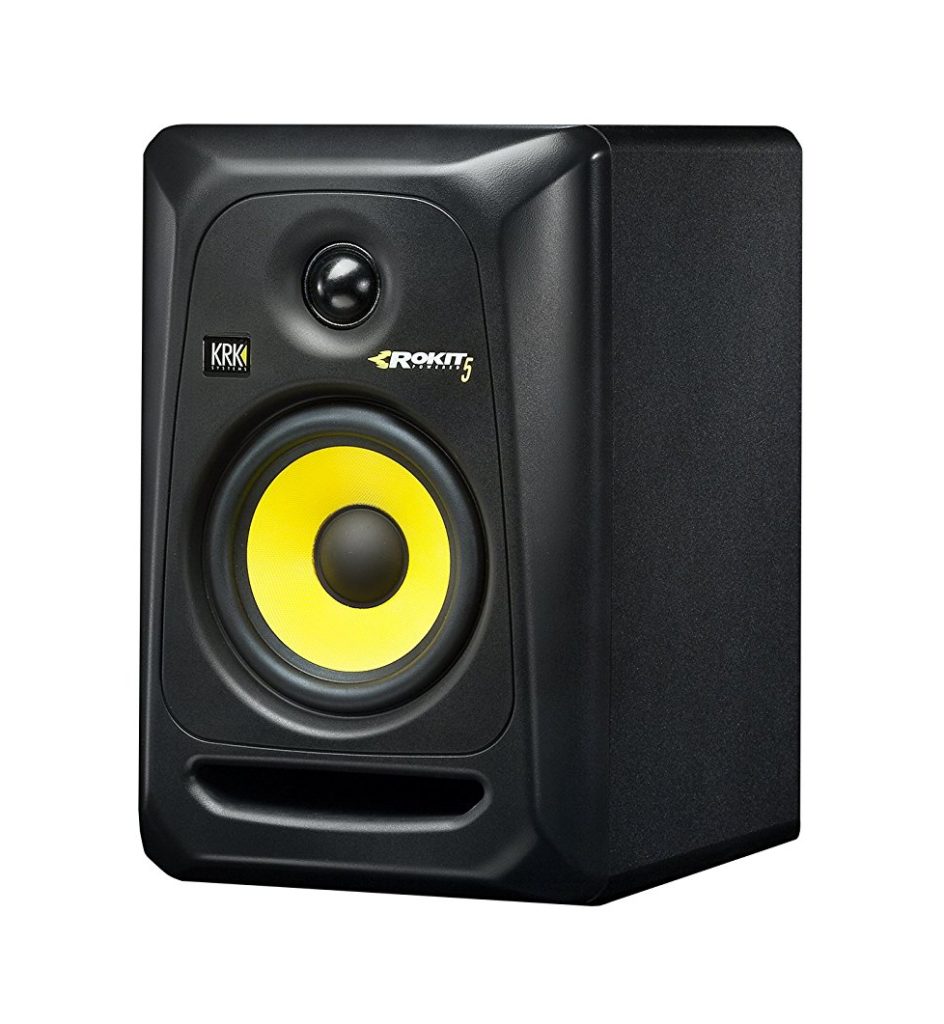
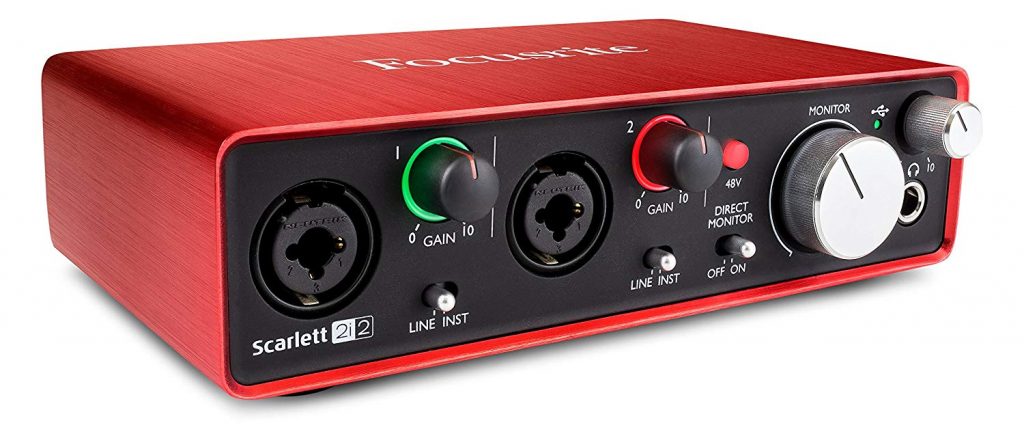
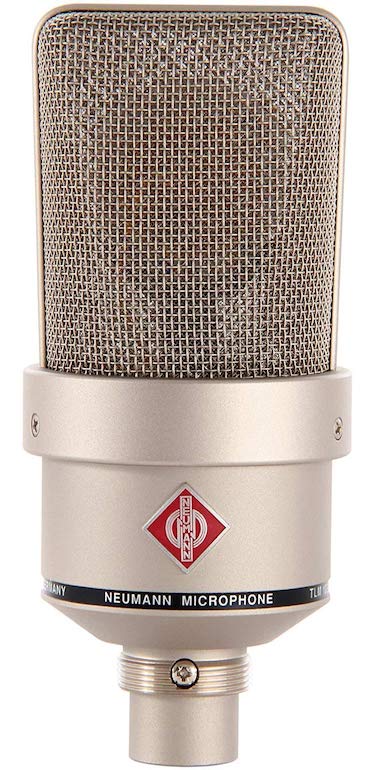
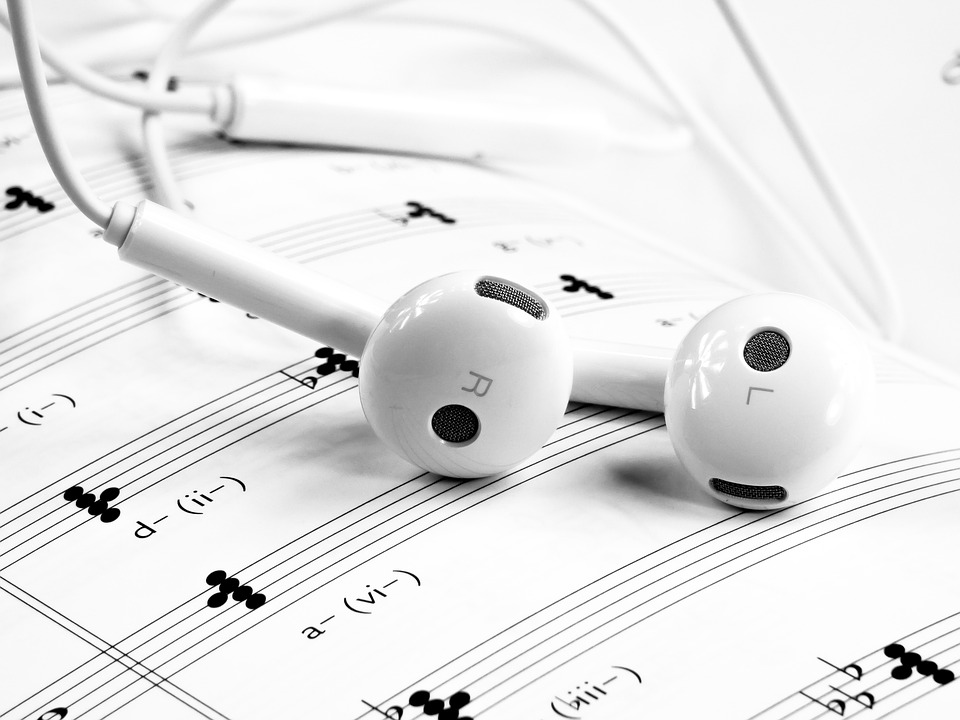

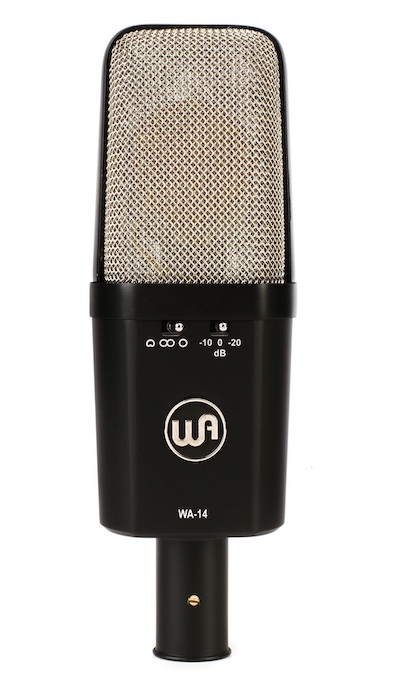
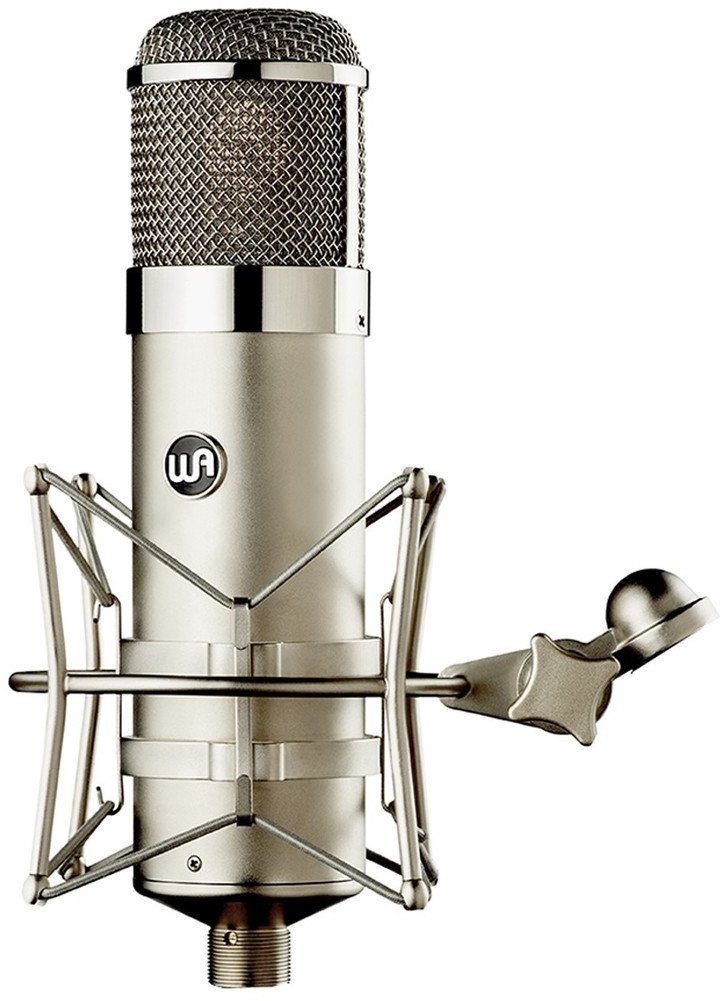
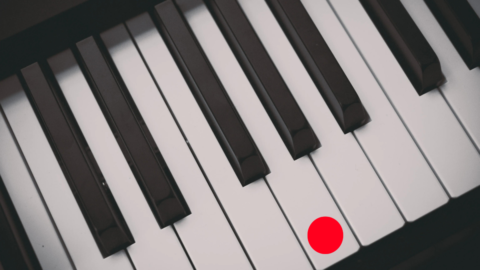












It’s really idiotic to review monitors by price as a single cabinet when they will be used as a pair minimal.
Hey Tarik,
I can see how it would seem idiotic, but monitors are typically sold individually and not as a pair. If you check out reviews on other websites they also evaluate them the same way. If most websites categorize the pricing of monitors individually, and we chose to categorize them by their pair pricing, this would probably cause more confusion than the former.